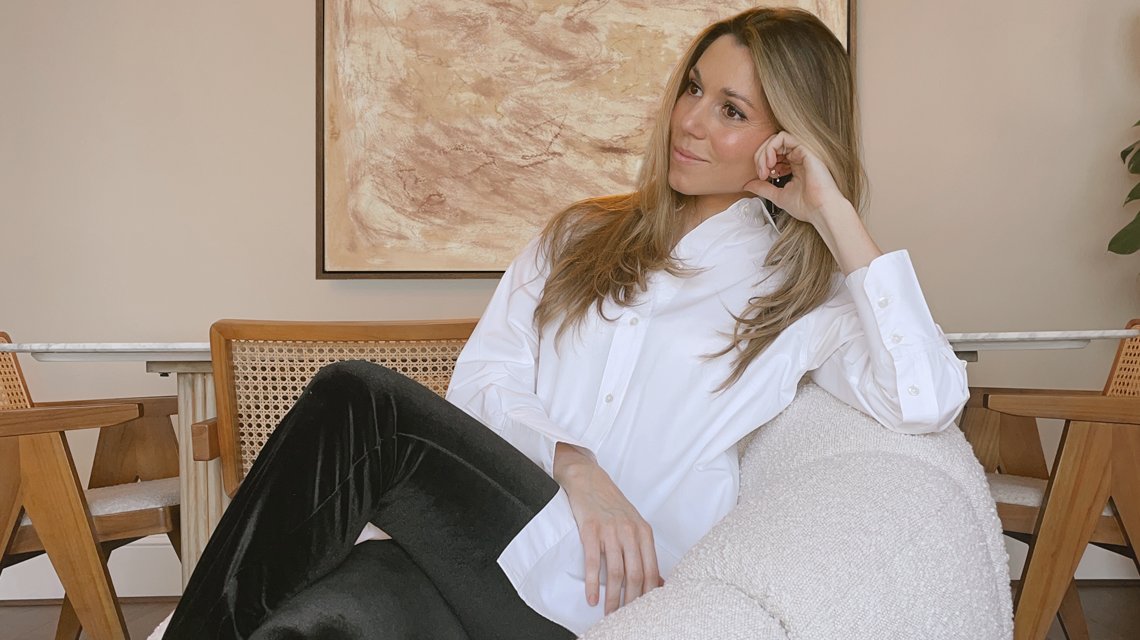
Behind the Design: 10 Q&As about Marta
1. What inspired you to become an Interior Designer?
I’ve always been fascinated by how spaces influence the way we feel—or how they, in turn, reflect who we are. Growing up, I often found myself wondering what people’s homes looked like, imagining them shaped by their personality traits, traditions, hobbies, and life aspirations. Over time, I realized that interior design wasn’t just about aesthetics—it was about creating environments that enhance daily life and represent one’s truest self. That passion led me to pursue design professionally, and I haven’t looked back since.
2. What inspired you to start your own business?
After more than seven years working as an Interior Designer on high-end projects and later as a Design Manager for a major hospitality real estate company, I felt the need to develop my own designs and embrace greater creative freedom. Starting my own business has allowed me to work closely with clients, craft spaces that tell a story, and design with purpose. It’s been a journey fueled by creativity, meaningful connections, and the joy of turning visions into reality.
Growing up, I often found myself wondering what people’s homes looked like, imagining them shaped by their personality traits, hobbies, and life aspirations. Over time, I realized that interior design wasn’t just about aesthetics, it was about creating environments that enhance and represent one’s truest self.
3. How would you describe your interior design style?
I am personally drawn to merging contemporary design with period features, creating a seamless dialogue between old and new. My ever-evolving fascination with art, colour, craftsmanship, and texture drives me to collaborate with artisans, curating bespoke, vibrant, and characterful interiors that feel authentic and enduring beyond trends. I have a deep appreciation for mid-century modern aesthetics, drawn to their timeless elegance, clean lines, and the perfect balance of form and function. I deeply value the impact of art and history on a space, always striving to design interiors with strong personality and a meaningful sense of place—never generic or soulless, but instead full of depth, character, and intention.
4. What does your design process look like?
It really depends on the services my client needs from me. In general, my design process begins with a consultation to understand your scope of work, vision, and lifestyle. I then develop the Concept Design, which includes mood boards, sketches, initial layouts and other materials -as needed- to illustrate my proposed design intent for the Project. Once the direction is agreed upon with the Client, I proceed with the detailed design phase, which may include comprehensive plans of construction finishes, joinery drawings, material selections, furniture specifications, and a curated proposal of décor and equipment. If required, I also coordinate with contractors and oversee execution on site to ensure a seamless project implementation. Whether working in-person or remotely, my approach is always collaborative and detail-oriented, ensuring a smooth and enjoyable process from concept to completion.
My design process begins with a consultation to understand the client’s scope of work and vision. I then develop the Concept Design and once approved, I proceed with the Detailed Design. If required, I also coordinate with contractors and oversee execution on site to ensure a seamless implementation.
5. Where do you find inspiration for your designs?
My inspiration comes from everywhere, often without even realizing it, but one of my biggest sources is traveling. There is so much to absorb from different cultures—their art, craftsmanship, traditions, and even the way people experience daily life. Every place has a unique rhythm, and understanding its design language enriches my perspective. A lot also comes from other creatives! There’s nothing more inspiring than discovering and learning from creative minds across all industries. Creativity is limitless, and seeing how others approach their craft always sparks new ideas and fresh perspectives in my own design process.
6. What do you think is the most important element in a well-designed space?
To me, the most important elements in a well-designed space come down to balance and designing smartly.
Balance is key when it comes to aesthetics—it’s about ensuring that everything in a space works cohesively. A well-balanced design feels effortless and harmonious, drawing you in without feeling overwhelming or underwhelming.
Also, designing smartly is just as important as making a space beautiful. A great design always takes into account practical constraints like time and budget, ensuring that the final result is not only aesthetically pleasing but also achievable and well-executed.
7. What is your biggest interior desing pet peeve?
Might sound like a cliché, but without a doubt, my biggest pet peeve is rushing into trends without considering longevity. A well-designed space should stand the test of time, not feel outdated after a season. I always encourage clients to invest in timeless, high-quality foundational pieces and incorporate trends in small, interchangeable ways—like accessories, textiles, or an accent wall—so they can refresh their space without a complete overhaul.
My biggest pet peeve is rushing into trends without considering longevity. A well-designed space should stand the test of time. I always encourage clients to invest in timeless, high-quality foundational pieces so they can refresh their space without a complete overhaul.
